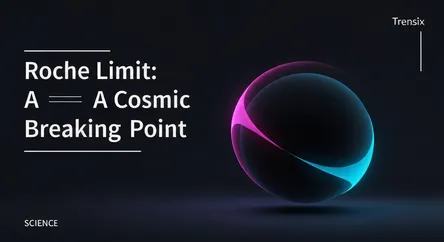Science
Roche Limit: A Cosmic Breaking Point

Discover the Roche limit, the cosmic boundary where a celestial body's own gravity is overwhelmed by tidal forces, leading to its disintegration.
What is it?
The Roche limit is an invisible boundary around a massive celestial body, like a planet. If a smaller object, such as a moon held together by its own gravity, orbits inside this limit, it gets torn apart. This occurs because the planet's tidal forces—the difference in its gravitational pull on the near and far sides of the moon—overcome the moon's own gravitational glue, causing it to disintegrate into debris, which can form a ring.
Why is it trending?
This concept is key to explaining stunning cosmic features. The formation of Saturn's rings is the classic example, likely made of debris from a moon that crossed the Roche limit. As astronomers discover exoplanets and witness comets breaking up near Jupiter (like Shoemaker-Levy 9), the Roche limit remains a crucial tool for explaining how planetary systems form and evolve, keeping it relevant in space news and research.
How does it affect people?
While it poses no direct threat, understanding the Roche limit is vital for astronomy. It helps scientists model solar system stability and predict the fate of asteroids that come too close to giant planets. This knowledge is essential for space exploration, ensuring probes follow safe trajectories, and it deepens our grasp of the powerful forces that govern the universe and shape our cosmic neighborhood.